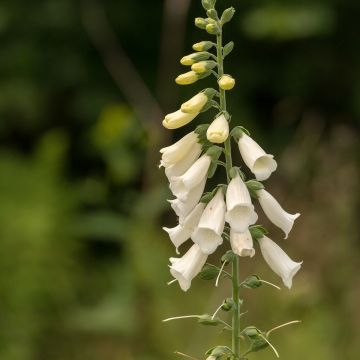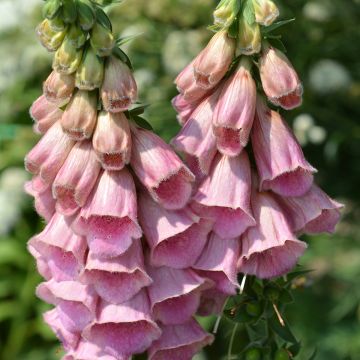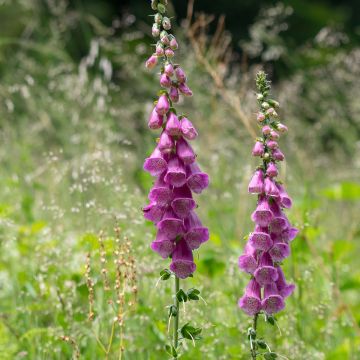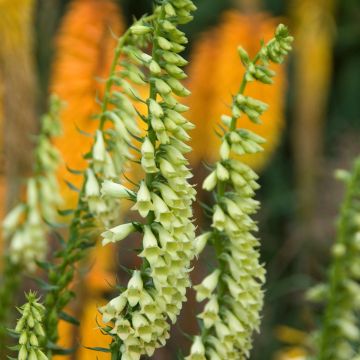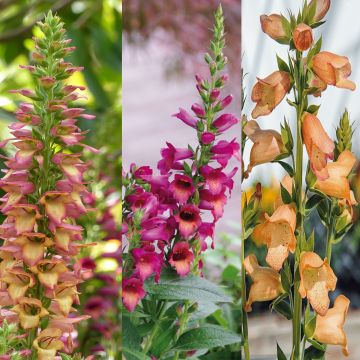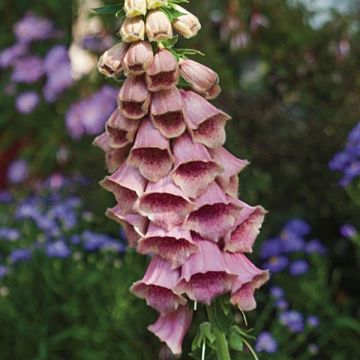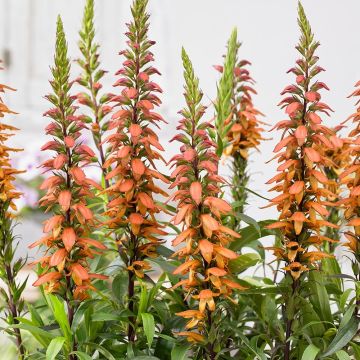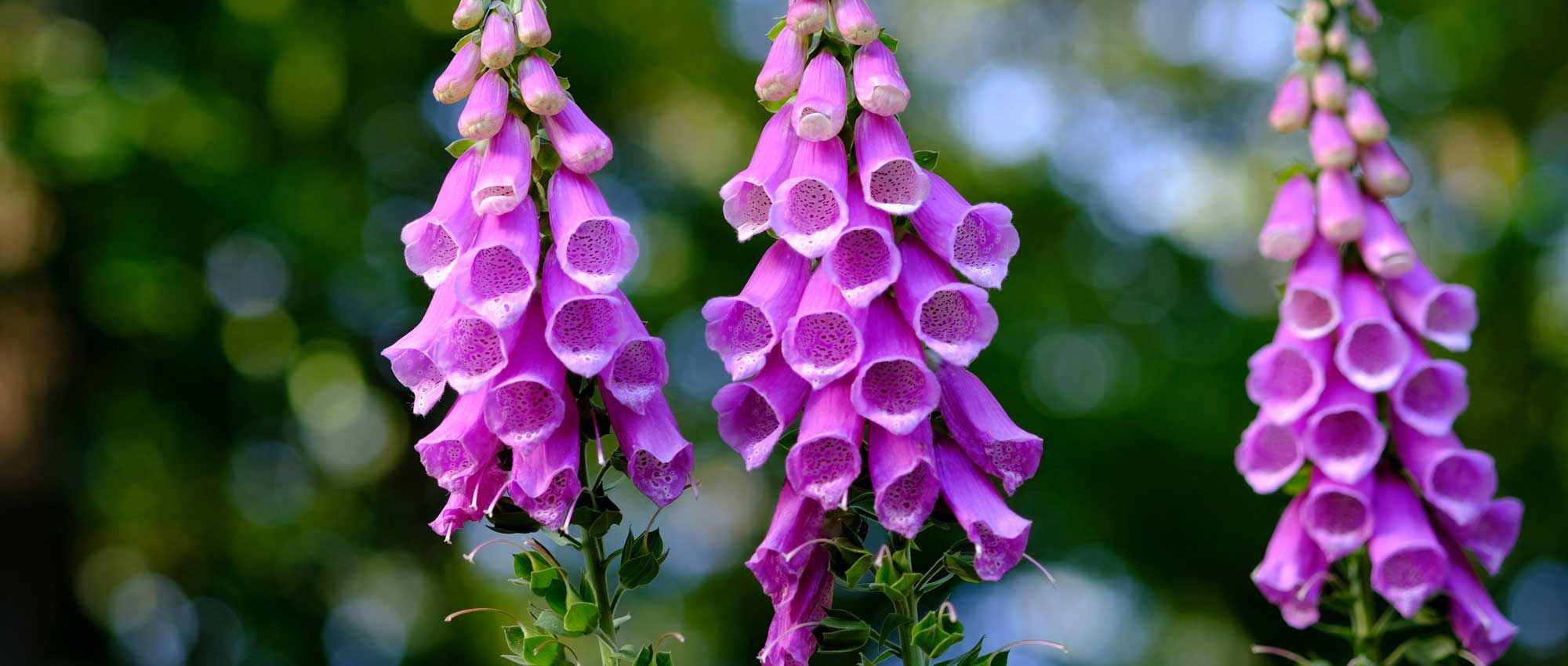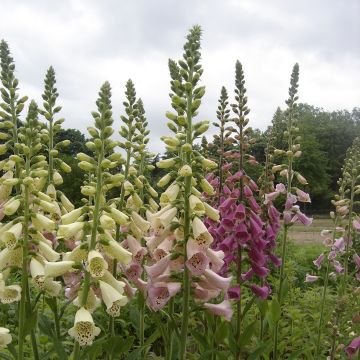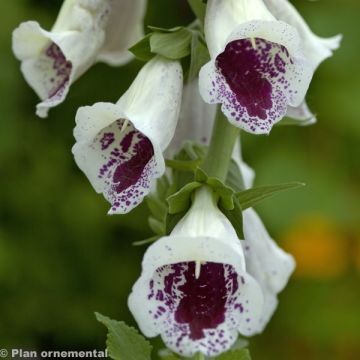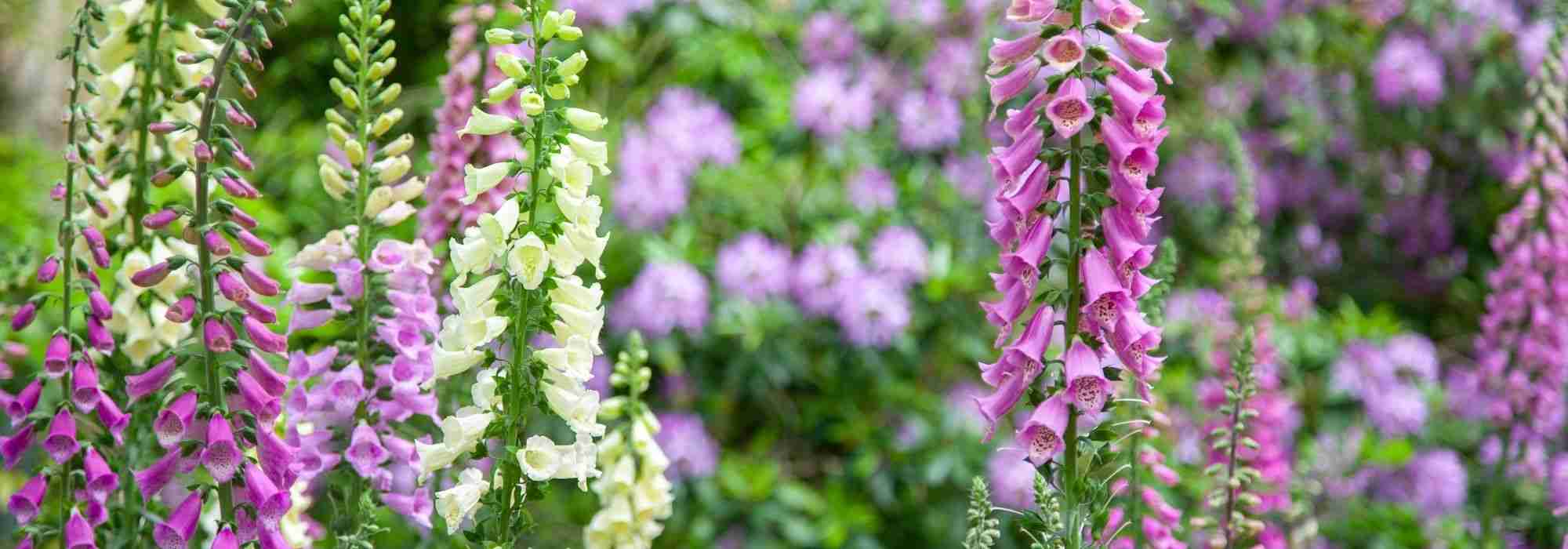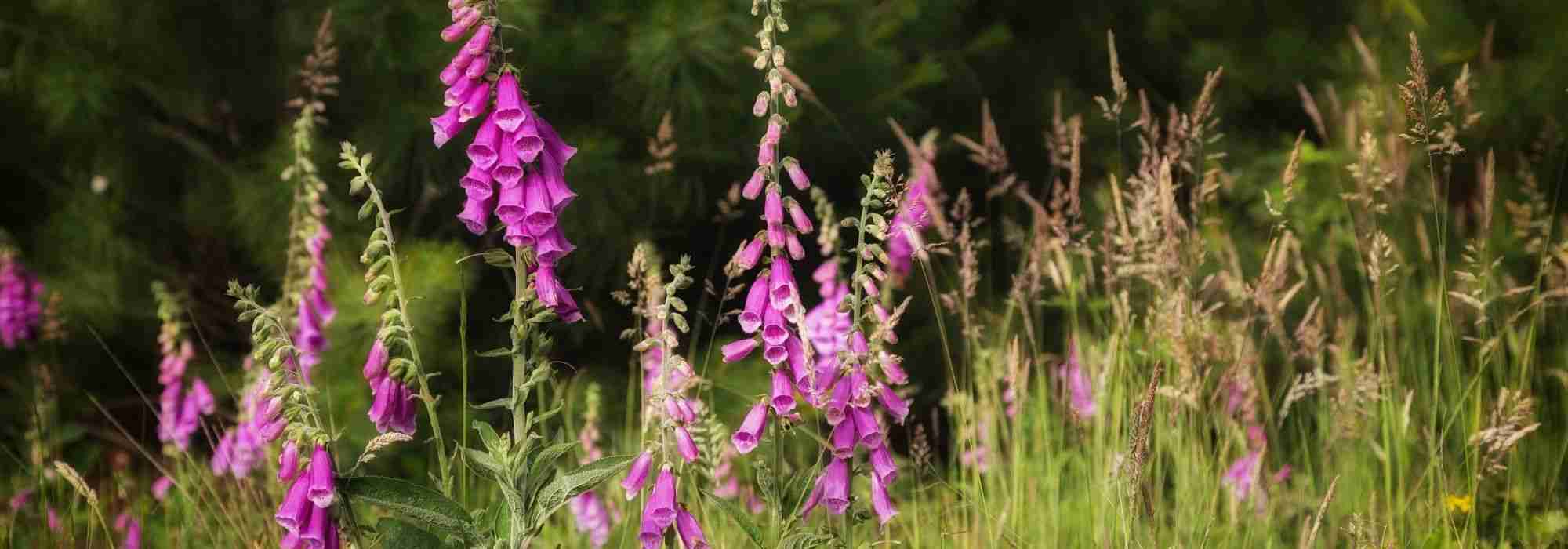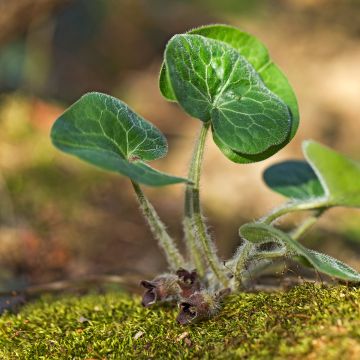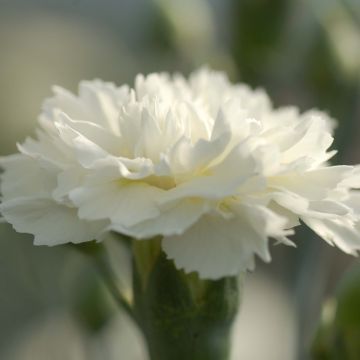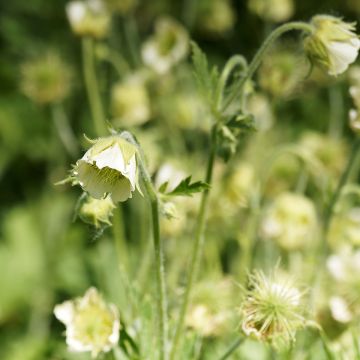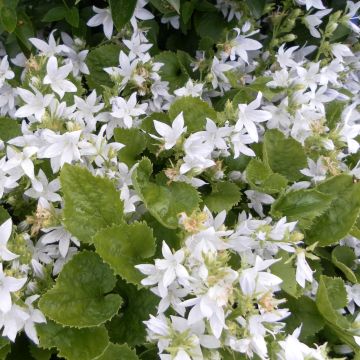

Digitale purpurea Pam s Split
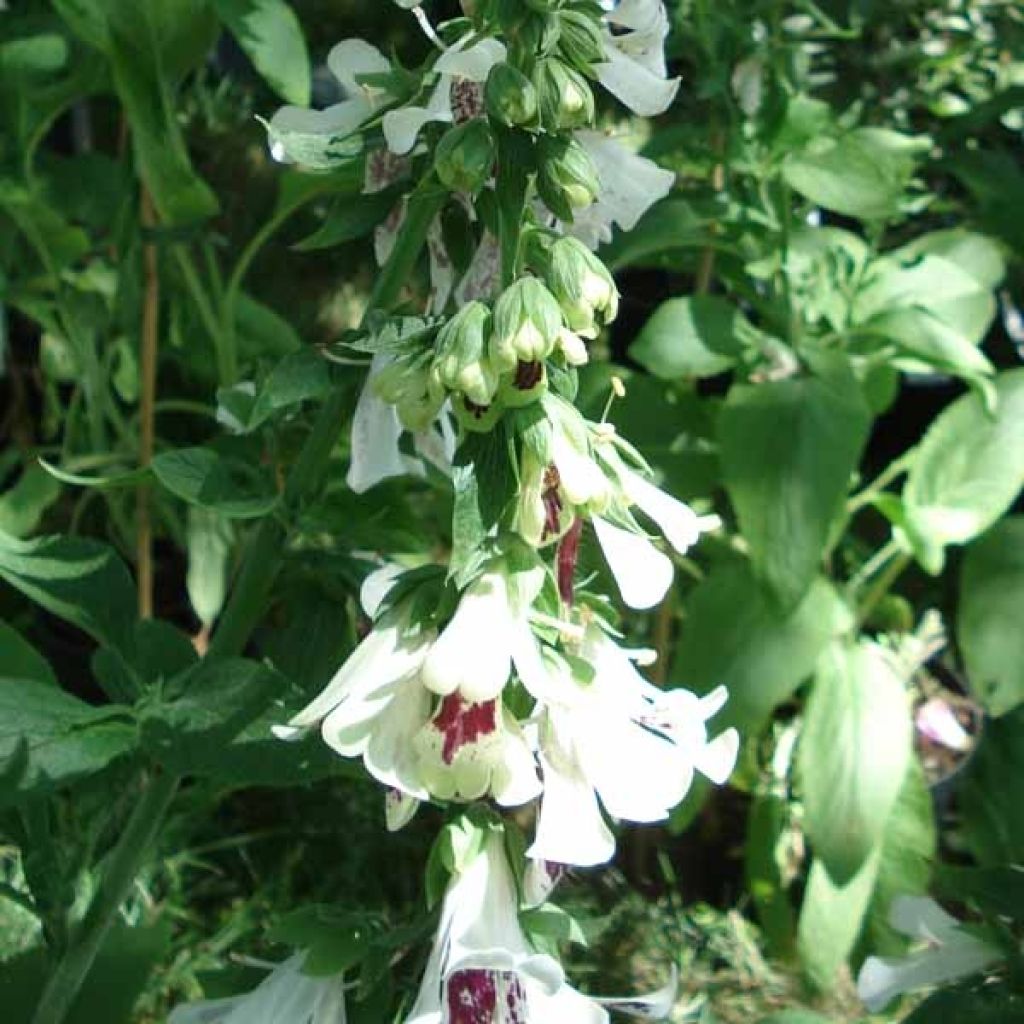

Digitale purpurea Pam s Split
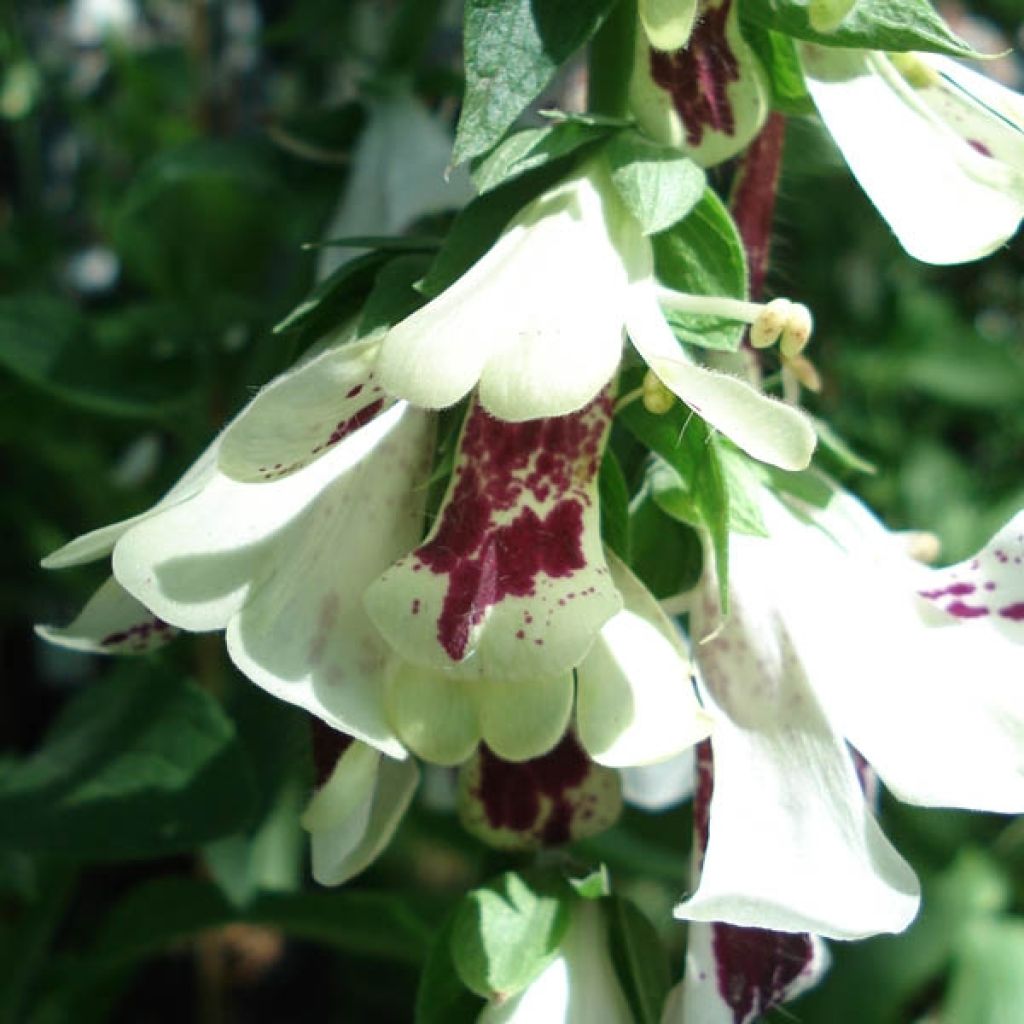

Digitale purpurea Pam s Split
Digitalis purpurea Pams Split - Foxglove
Digitalis purpurea Pam's Split
Foxglove, Common Foxglove, Lady's Glove
Special offer!
Receive a €20 voucher for any order over €90 (excluding delivery costs, credit notes, and plastic-free options)!
1- Add your favorite plants to your cart.
2- Once you have reached €90, confirm your order (you can even choose the delivery date!).
3- As soon as your order is shipped, you will receive an email containing your voucher code, valid for 3 months (90 days).
Your voucher is unique and can only be used once, for any order with a minimum value of €20, excluding delivery costs.
Can be combined with other current offers, non-divisible and non-refundable.
Why not try an alternative variety in stock?
View all →This plant carries a 12 months recovery warranty
More information
We guarantee the quality of our plants for a full growing cycle, and will replace at our expense any plant that fails to recover under normal climatic and planting conditions.
Would this plant suit my garden?
Set up your Plantfit profile →
Description
Digitalis purpurea Pam's Split is a new variety of foxglove with stunning two-tone flowering, just like its remarkable relative, Digitalis Pam's Choice. More biennial than perennial, this plant produces several floral stems filled with cream-white bells, daringly revealing their intensely burgundy-spotted throats. While its flowering is a feast for the eyes in borders, its shorter habit allows it to make a stylish statement in a large pot on the terrace or in spectacular bouquets.
The Foxglove Pam's Split is a cultivar derived from Digitalis purpurea, a plant from the Plantaginaceae family. It is a biennial to perennial variety, developing a large 45cm (18in) diameter rosette from spring, with pubescent, dark green, dentate-crenate leaves, the undersides of which are networked with ridges. They are covered in fine, light-coloured woolly hairs. In the second year, in May-June, up to 5 hollow but sturdy stems emerge from the rosette, reaching a height of 1.20m (4ft), bearing a very dense floral spike composed of numerous tightly packed tubular flowers. Each cream-white bell-shaped flower is split lengthwise, turned back to reveal a throat heavily maculated with rich red. The flowers are nectar-rich and nectariferous.
Plant Foxglove Pam's Split in full sun or partial shade, in humus-rich and moist soil, in the company of old roses or perennials with single flowers such as columbines, centaureas, astrances or meadow rues. This well-branched variety, with a moderately tall habit, will allow you to enjoy its flowering for a long time in a large pot on the terrace. This magnificent plant, as graphic as an acanthus, will also accompany perennial geraniums, heucheras, and feathery fern foliage in light woodland. Take advantage of this flower in the house as well, by creating sumptuous bouquets.
Digitalis purpurea Pams Split - Foxglove in pictures
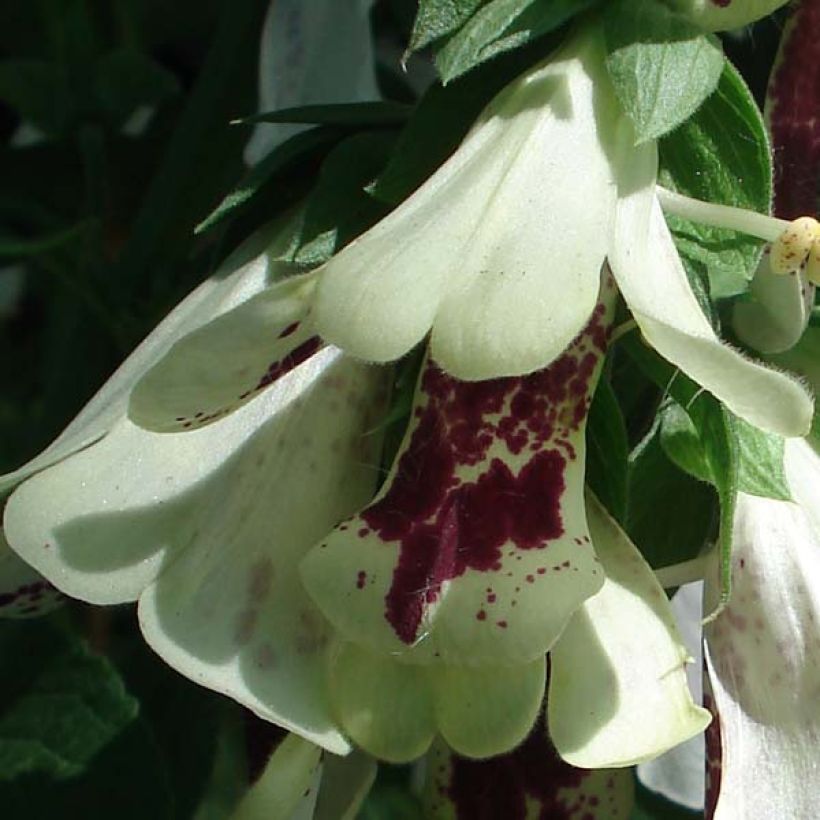

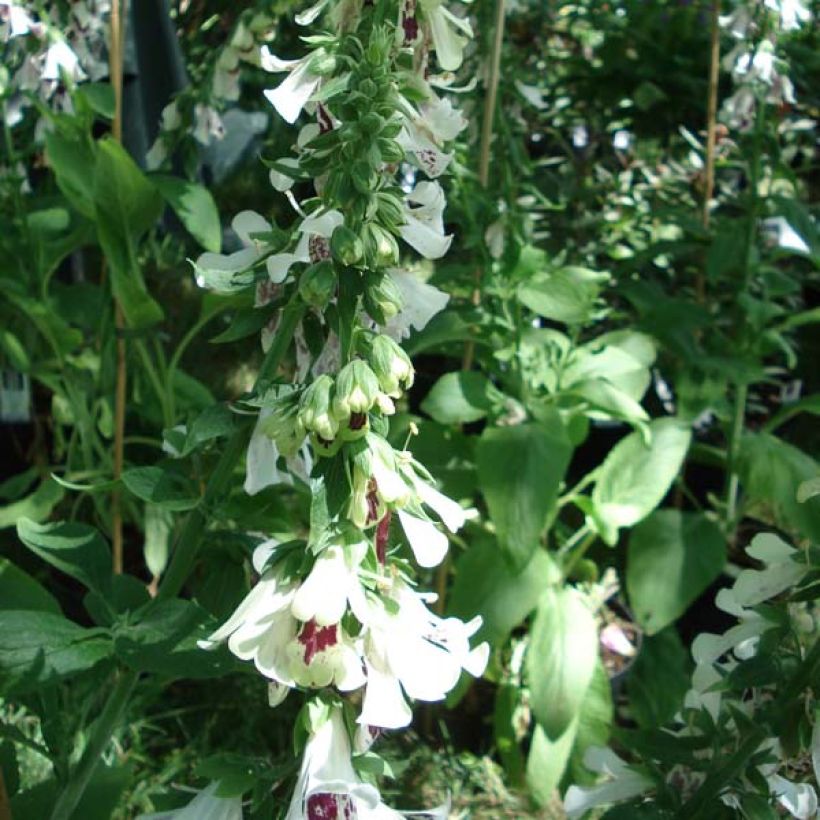

Flowering
Foliage
Plant habit
Safety measures
Botanical data
Digitalis
purpurea
Pam's Split
Scrophulariaceae
Foxglove, Common Foxglove, Lady's Glove
Cultivar or hybrid
ingestion
Cette plante est toxique si elle est ingérée volontairement ou involontairement.
Ne la plantez pas là où de jeunes enfants peuvent évoluer, et lavez-vous les mains après l'avoir manipulée.
Pensez à conserver l'étiquette de la plante, à la photographier ou à noter son nom, afin de faciliter le travail des professionnels de santé.
Davantage d'informations sur https://plantes-risque.info
Other Digitalis - Foxglove
View all →Planting and care
Purple foxgloves and their varieties prefer partial shade and a neutral to slightly acidic soil, which is deep, humus-rich but not too rich and not too dry or calcareous. These plants are not afraid of the root competition from old trees or perennials. They are sturdy and very hardy plants, but their lifespan is quite short. They self-seed abundantly in the garden. Some species self-seed a lot. If you don't want to be invaded, cut the flower stalks just after flowering.
Planting period
Intended location
Care
Planting & care advice
This item has not been reviewed yet - be the first to leave a review about it.
Similar products
Haven't found what you were looking for?
Hardiness is the lowest winter temperature a plant can endure without suffering serious damage or even dying. However, hardiness is affected by location (a sheltered area, such as a patio), protection (winter cover) and soil type (hardiness is improved by well-drained soil).

Photo Sharing Terms & Conditions
In order to encourage gardeners to interact and share their experiences, Promesse de fleurs offers various media enabling content to be uploaded onto its Site - in particular via the ‘Photo sharing’ module.
The User agrees to refrain from:
- Posting any content that is illegal, prejudicial, insulting, racist, inciteful to hatred, revisionist, contrary to public decency, that infringes on privacy or on the privacy rights of third parties, in particular the publicity rights of persons and goods, intellectual property rights, or the right to privacy.
- Submitting content on behalf of a third party;
- Impersonate the identity of a third party and/or publish any personal information about a third party;
In general, the User undertakes to refrain from any unethical behaviour.
All Content (in particular text, comments, files, images, photos, videos, creative works, etc.), which may be subject to property or intellectual property rights, image or other private rights, shall remain the property of the User, subject to the limited rights granted by the terms of the licence granted by Promesse de fleurs as stated below. Users are at liberty to publish or not to publish such Content on the Site, notably via the ‘Photo Sharing’ facility, and accept that this Content shall be made public and freely accessible, notably on the Internet.
Users further acknowledge, undertake to have ,and guarantee that they hold all necessary rights and permissions to publish such material on the Site, in particular with regard to the legislation in force pertaining to any privacy, property, intellectual property, image, or contractual rights, or rights of any other nature. By publishing such Content on the Site, Users acknowledge accepting full liability as publishers of the Content within the meaning of the law, and grant Promesse de fleurs, free of charge, an inclusive, worldwide licence for the said Content for the entire duration of its publication, including all reproduction, representation, up/downloading, displaying, performing, transmission, and storage rights.
Users also grant permission for their name to be linked to the Content and accept that this link may not always be made available.
By engaging in posting material, Users consent to their Content becoming automatically accessible on the Internet, in particular on other sites and/or blogs and/or web pages of the Promesse de fleurs site, including in particular social pages and the Promesse de fleurs catalogue.
Users may secure the removal of entrusted content free of charge by issuing a simple request via our contact form.
The flowering period indicated on our website applies to countries and regions located in USDA zone 8 (France, the United Kingdom, Ireland, the Netherlands, etc.)
It will vary according to where you live:
- In zones 9 to 10 (Italy, Spain, Greece, etc.), flowering will occur about 2 to 4 weeks earlier.
- In zones 6 to 7 (Germany, Poland, Slovenia, and lower mountainous regions), flowering will be delayed by 2 to 3 weeks.
- In zone 5 (Central Europe, Scandinavia), blooming will be delayed by 3 to 5 weeks.
In temperate climates, pruning of spring-flowering shrubs (forsythia, spireas, etc.) should be done just after flowering.
Pruning of summer-flowering shrubs (Indian Lilac, Perovskia, etc.) can be done in winter or spring.
In cold regions as well as with frost-sensitive plants, avoid pruning too early when severe frosts may still occur.
The planting period indicated on our website applies to countries and regions located in USDA zone 8 (France, United Kingdom, Ireland, Netherlands).
It will vary according to where you live:
- In Mediterranean zones (Marseille, Madrid, Milan, etc.), autumn and winter are the best planting periods.
- In continental zones (Strasbourg, Munich, Vienna, etc.), delay planting by 2 to 3 weeks in spring and bring it forward by 2 to 4 weeks in autumn.
- In mountainous regions (the Alps, Pyrenees, Carpathians, etc.), it is best to plant in late spring (May-June) or late summer (August-September).
The harvesting period indicated on our website applies to countries and regions in USDA zone 8 (France, England, Ireland, the Netherlands).
In colder areas (Scandinavia, Poland, Austria...) fruit and vegetable harvests are likely to be delayed by 3-4 weeks.
In warmer areas (Italy, Spain, Greece, etc.), harvesting will probably take place earlier, depending on weather conditions.
The sowing periods indicated on our website apply to countries and regions within USDA Zone 8 (France, UK, Ireland, Netherlands).
In colder areas (Scandinavia, Poland, Austria...), delay any outdoor sowing by 3-4 weeks, or sow under glass.
In warmer climes (Italy, Spain, Greece, etc.), bring outdoor sowing forward by a few weeks.






























